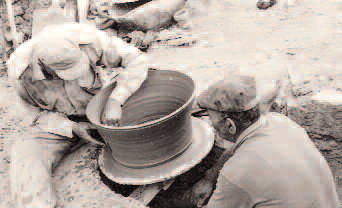- Details
- Hits: 6788
 The art of pottery in Crete has a continuous history for more than 4000 years. Ceramics dating back to the Neolithic era (stone age) are on display in the numerous Museums and it is impressive how much they look alike to those made today in Crete.
The art of pottery in Crete has a continuous history for more than 4000 years. Ceramics dating back to the Neolithic era (stone age) are on display in the numerous Museums and it is impressive how much they look alike to those made today in Crete.
There are four main areas where these techniques are still flourishing in Crete, namely: in Heraklion the village of Thrapsano, in Rethymnon it is Margarites, Nochia village in Chania and Kentri in Lasithi Prefecture. T
he assumption that the pottery making villages are scattered geographically to evenly serve the needs of the populations do not seem to be valid.
The pottery makers were traveling, in well organized groups, around the island bringing together all required equipment and setting up hole new laboratories in the areas they visited. In this way they served the exact needs of remote areas while it had proved much easier to carry the equipment than carry the bulky and heavy pots around the island with donkeys. This movement of technicians is called Vendema from the Venetian word Vendemmia, which means “harvesting” and is also used for the harvesting of olives.
On the other hand there has been some sort of specialization in sizes of pots and usages.
The tradition in Margarites or Kentri, is to make smaller pots, while Thrapsano is more specialized in larger ones. The large pots in Thrapsano, used to store mainly oil are very much the same as those seen in the Minoan palaces of Knossos or Phaestos. The technique is the same and no wonder, Thrapsano is considered today as a living Museum of prehistoric Arts. A visit to the laboratories is a trip to history.
The article is from E.U Local delicacies guide of the "network for the commercialisation of local products and rural tourism"


